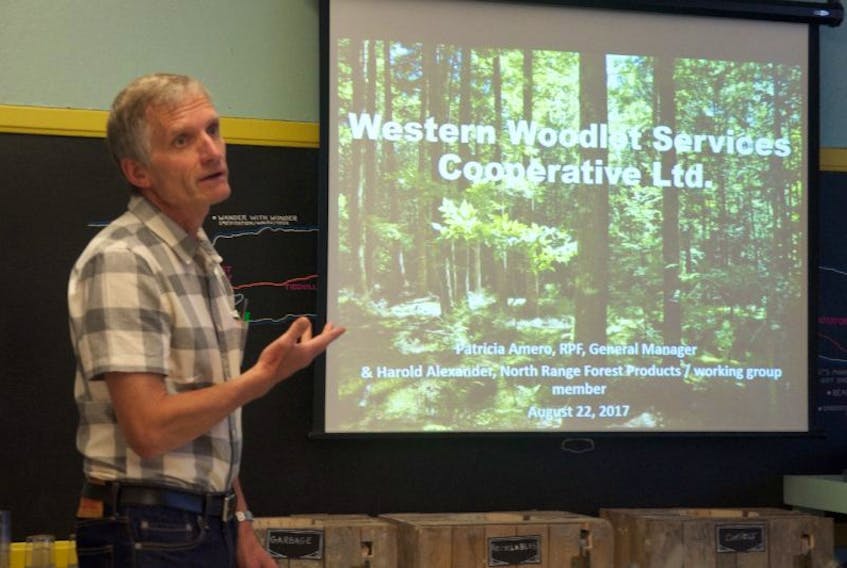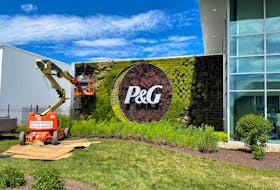Harold Alexander is a founding member of the Western Woodlot Services Cooperative Ltd., a non-profit group of woodlot owners working for other private woodlot owners.
He, along with fellow member, founder and forester Patricia Amero, gave a presentation Tuesday, August 22, at the Schoolhouse Cafe in Sandy Cove, where they discussed the possibilities proper woodlot management can offer.
“It can create more jobs and steer people away from clearcutting at the same time,” said Alexander.
The group
The WWSC promotes effective management of private woodlots and preaches intensive management rather than clearcutting, according to its founders.
The group presented its ideas and goals to the Department of Natural Resources in 2016, who later agreed to support it.
The group touts around 50 members and aims to operate independently within the next six years.
Services offered by the co-op to participating woodlot owners would include timber cruising or assessment of the lot’s tree inventory, lot management planning for its most effective use, silviculture to promote healthy forest growth, and field days, to show woodlot owners such work in action and introduce them to technicians.
During the presentation, Amero said all of these aim to optimizing forests and woodlots for proper growth of healthy, useable trees.
“Forest time is a long time – it takes a while for it to grow,” she said, “but management is necessary, and that management doesn’t have to be clearcutting.”
Alexander compared this practice to gardening and pulling out invasive weeds.

“If you don’t do any weeding or thinning, you know what you’re left with,” he said.
Harold said it’s also about finding a happy medium between too-early and too-late cuts.
“You don’t want to cut young growths, but you can’t leave it standing too long either. It’s all about optimization to ensure future growths,” he said.
Forestry finds in Finland
Alexander spoke on his own decades of experience in forestry during the presentation, coupled with inspiration he found on his recent trip to Finland, where he met with forestry technicians to see their operation methods.
He saw many practices, like intensifying woodlot management and diversifying markets, as practices that could be applied to Nova Scotia.
“I realize Finland has several times more people and land than Nova Scotia, but they also don’t have anywhere near the variety of tree species we do,” he said.
“We are different, but many methods they use could be applied here.”
And the first method he’d like to happen would be management, through the WWSC, leading to the stimulation of now-dormant woodlots and their owners.
“The job creation would be such that current wood lot owners become more active, find the right merchandising, and make more money,” he said.
Alexander admitted challenges including lacking pulp mills and falling prices for both soft and hard wood lumber face forestry and concluded this process will take around 50 to 100 years to complete.
“I won’t be alive to see the day we reap the benefits from this, I don’t think,” said Alexander.
“But that’s not what this is about – it’s about ensuring these trees will be here and will continue growing for my children and their children.”









